The coinage of the Internment Camps
Liverpool, NSW, 1914-1917
The first internment camp for political prisoners was established at Liverpool in New South Wales at the outbreak of World War I. Little is known about this camp but it is of numismatic interest because the first Australian internment camp tokens were issued for use there. Perhaps setting a precedent for the WWII camps, the Liverpool token was radically different from any coin in general circulation.
Liverpool Internment Camp Token
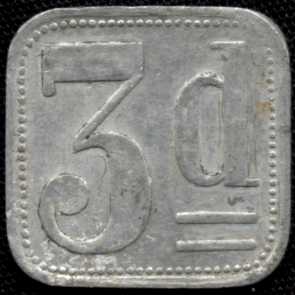
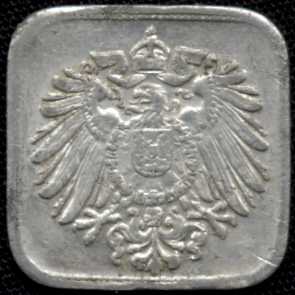
7/10'' across, this three penny token is one of three types known for the Liverpool camp. Not intended for long-term use, it was struck in aluminium. Very few have survived and most of those are badly worn.
Hay, NSW, 1941-1945
It is fairly well known that Australia was "host" to a number of political detainees exported from Britain in 1940 aboard the military transport ship Dunera. The British Government considered these people to be potential spies but they had not actually been convicted of any crime. Almost two thousand of these prisoners were held at two camps near Hay in New South Wales where they remained until the end of WWII.
Australian currency was prohibited inside the camps and the first medium of exchange used therein was a series of currency notes produced inside the camp in 1941. The denominations printed were 6d, 1/- and 2/- but the issue of these notes contravened Australian law and they were withdrawn in favor of tokens issued by and on behalf of the Australian Defense Canteen Service from September 1941 onwards.
The Internment Camp Tokens were struck by private contractors in Victoria and were also used in New Zealand. They were withdrawn at the end of the war and exchanged for Australian legal tender coins and notes. Nevertheless a few were souvenir by the inmates and/or guards and so are available to collectors today. The 5/- token is by far the scarcest and estimates put the number in existence below 100 specimens. This means they are much rarer than the 1930 penny.
Five shillings Hay Internment Camps Token
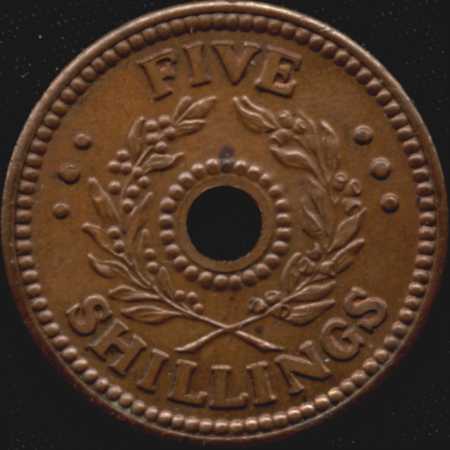
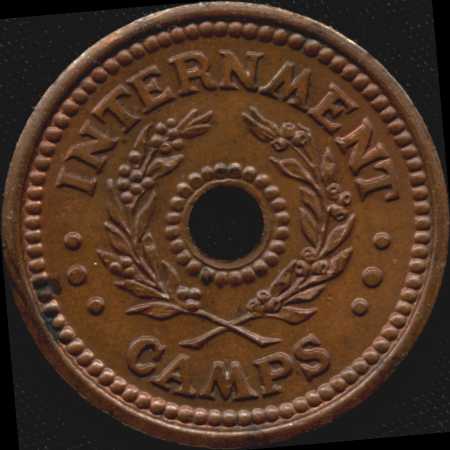
Bronze, 28.6mm (roughly 1 1/8")
Two shillings Hay Internment Camps Token
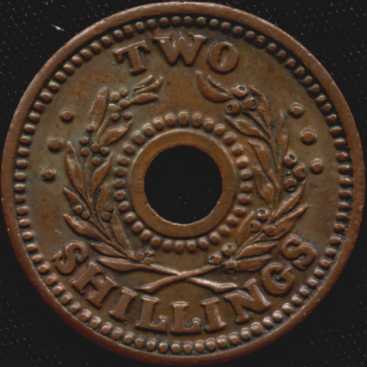
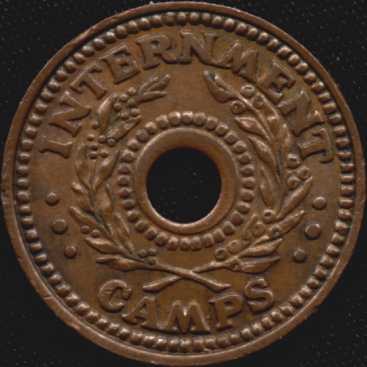
Bronze, 22.8mm (roughly 7/8")
One shilling Hay Internment Camps Token
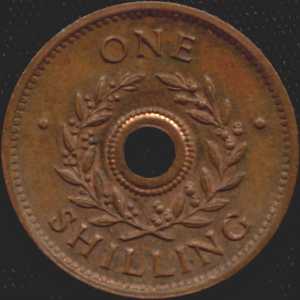
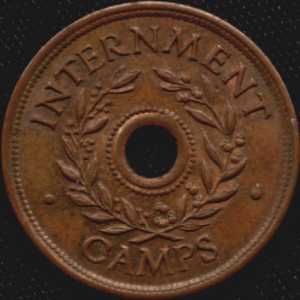
Bronze, 18.8mm (almost 3/4"), 2.25g - 2.4g
Note that the coins minted by Luke & Co show several differences in design from the coins minted by Arendeen & Sons.
Three pence Hay Internment Camps Token
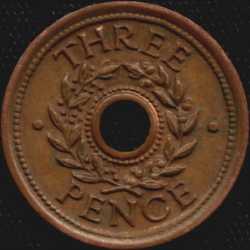
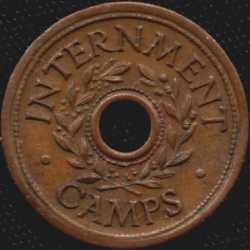
Bronze, 15.8mm (about 5/8"), about 1.35g
The word CAMPS on the obverse was originally engraved as CAMP and most specimens of this coin show traces of the original lettering. It is possible that a few specimens exist with the CAMP legend.
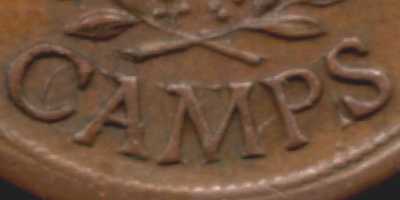
One Penny Hay Internment Camps Token
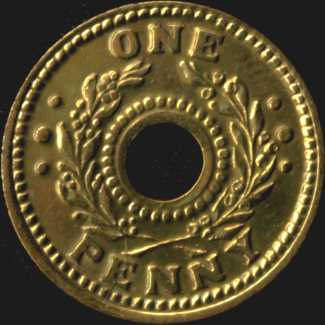
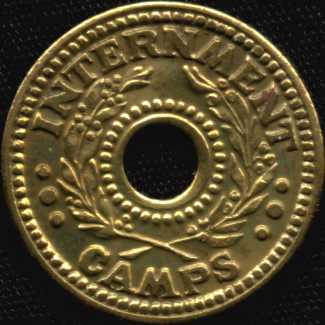
Brass, 20.3mm (about 13/16")
Note the reversion to the more ornate design and heavier lettering characteristic
of the Aberdeen & Sons tokens.
The specimen shown here has a die crack through the E in PENNY.
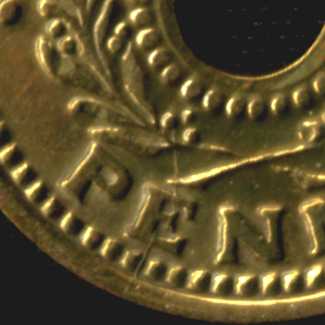
Other Articles
The coinage of the Australian colonies 1788-1909
The Melbourne Centenary Florin 1935

